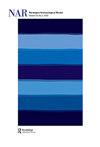6世纪危机期间的农业韧性:利用挪威西南部Hove-Sørbø和Forsandmoen的植物宏化石数据探索策略和适应
IF 1.1
3区 历史学
0 ARCHAEOLOGY
引用次数: 2
摘要
从公元6世纪中期开始,挪威西南部罗加兰的考古材料发生了重大变化,这被解释为与6世纪危机有关的人口减少和经济衰退。从欧洲大陆的历史和考古资料来看,这一事件是已知的,最近在斯堪的纳维亚考古辩论中引起了很大的关注。突然的气候变化、流行病和崩溃的贸易网络可能引发了新的情况,这将对挪威西南部的社会产生重大影响。本文利用两个具有不同先决条件和发展轨迹的考古遗址的植物-宏观化石数据,辅以动物考古数据和放射性碳测年,重建了农业的发展。在此基础上,它探讨了与6世纪危机有关的农业恢复力,并调查了各种农业战略和适应的优点。宏观化石数据揭示了作物组成的变化,其中一个遗址暂时引入了黑麦,这表明他们对新环境的适应。被研究的遗址显示出基于当地条件的不同生存策略,数据表明,可能依赖贸易的遗址完全被遗弃,而生活在更自给自足的遗址的人们能够适应他们的农业并在危机中生存下来。本文章由计算机程序翻译,如有差异,请以英文原文为准。
Agricultural Resilience during the 6th Century Crisis: Exploring Strategies and Adaptations Using Plant-Macrofossil Data from Hove-Sørbø and Forsandmoen in Southwestern Norway
Major changes in the archaeological material in Rogaland, southwestern Norway, from the mid-6th century AD have been interpreted as a population decline and an economic recession connected to the 6th century crisis. This event is known from historical and archaeological sources in continental Europe and has recently gained much attention in the Scandinavian archaeological debate. Sudden climate change, pandemic and collapsed trading networks likely induced new conditions, which would have had a major impact on the society in southwestern Norway. This paper uses plant-macrofossil data, supplemented by zooarchaeological data, and radiocarbon dates, from two archaeological sites with different prerequisites and trajectories, to reconstruct agricultural development. Based on this reconstruction, it explores agricultural resilience in connection with the 6th century crisis and investigates the merits of various agricultural strategies and adaptations. The macrofossil data reveals a change in crop composition, with a temporary introduction of rye at one of the sites, suggesting an adjustment to new circumstances. The studied sites display different subsistence strategies based on local conditions, and the data suggests complete abandonment of the site that probably depended on trade, while the people living at the more self-sufficient site were able to adapt their agriculture and survive the crisis.
求助全文
通过发布文献求助,成功后即可免费获取论文全文。
去求助
来源期刊

Norwegian Archaeological Review
ARCHAEOLOGY-
CiteScore
2.10
自引率
0.00%
发文量
13
期刊介绍:
Norwegian Archaeological Review published since 1968, aims to be an interface between archaeological research in the Nordic countries and global archaeological trends, a meeting ground for current discussion of theoretical and methodical problems on an international scientific level. The main focus is on the European area, but discussions based upon results from other parts of the world are also welcomed. The comments of specialists, along with the author"s reply, are given as an addendum to selected articles. The Journal is also receptive to uninvited opinions and comments on a wider scope of archaeological themes, e.g. articles in Norwegian Archaeological Review or other journals, monographies, conferences.
 求助内容:
求助内容: 应助结果提醒方式:
应助结果提醒方式:


